Firsts
As of right now, Kenyon is sending only 10 athletes to swim in Men's events at Nationals. Has a team that small ever won a National Championship?
Optional reading: An extensive disclaimer.1
There’s a good article in SwimSwam on Nationals invites here. The article points out that by, invite total, the Men’s Championship field looks like this:
Invited Swimmers
1. Emory, 18 swimmers
2. Denison, 15 swimmers
3. TIE: MIT, Chicago, 12 swimmers
5. Williams, 11 Swimmers
6. TIE: NYU, TCNJ, WashU, and Kenyon, 10 swimmers10
This doesn’t look great for the Gambier nobility.2 Kenyon’s own sports media seemed to be stifling a cry of agony. “Owls’ [sic] NCAA roster starts at ten” has a stiff quality. The author recites just-the-facts, as if trying to hold back the tears.3 Before ending the post on the hopeful note that Kenyon might add a diver or two to the squad, the article lists, by name, each member of the Kenyon Nationals roster. Which doesn’t take up much space because, well, there are only ten of them.
39
Back to the SwimSwam article. It does miss one key piece of information on the Men's List of Athletes by Institution. Next to ‘Swimmers Per Team’ there’s a field called ‘Events for Team’. It lists the total number of events those athletes were invited to swim. It is a proxy measure of the number of events in which they could be expected to final. It looks like this:
Events for Team
1. Emory, 45
2. Kenyon, 39
3. Williams, 38
4. TIE: Chicago, NYU, Tufts, 31
7. TIE: Denison, TCNJ, 27
9. MIT, 26Oh. So, wait. Does that mean Kenyon has a chance of winning the Men’s Championship?
2011
Data-availability constraints limit our discussion of Nationals roster size to the period since 2011. But we don’t mind starting with 2011 because something remarkable in the history of the Division III Men’s National Championships happened in 2011.
An historic first
In 2011, Kenyon lost. Well, more precisely, Denison won. Here is why that is so remarkable.
In 1980, the Kenyon Lords won the Division III National Championship, and then won Nationals every single year through 2010.
31
Kenyon won Nationals 31 times in a row. And they didn’t just win at Nationals. They steam-rolled the field.
To get a flavor of one of those teams (2008), check out the work of photographer Amelia Armstrong.







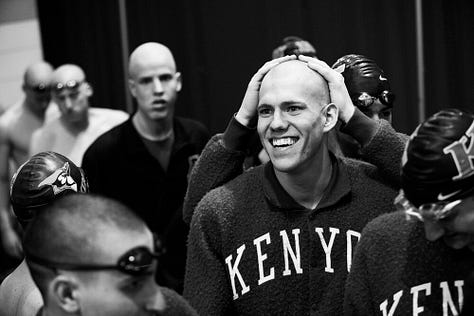
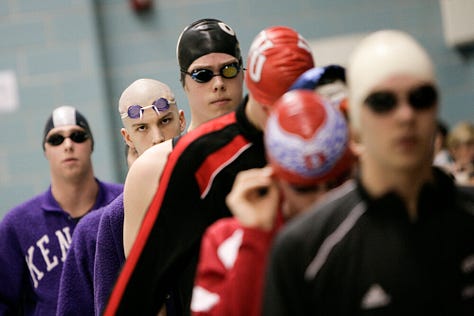
Kenyon just dominated. Until 2011.
424
In the years leading up to 2011, Denison was in a dark place. Class after class of Denison swimmers graduated and walked away from the pool under a cloud of frustration. And no end was in sight. At 2010 Nationals, Kenyon beat second-place Denison by 424 points.
But for the 2011 team, a few things started to go their way. Their crop of First-Years was possibly the strongest in the history of the school, including Al Weik, who would go on to win the most gold medals in Division III Nationals history.
Denison also had an advantage in diving, an area of little emphasis for Kenyon. And all the pressure of the crushed hopes and dreams of decades of swimmers who came before them seemed to have focused this team on a single goal.
Think we are exaggerating? Here’s a story: at the start of the 2010-11 season, Aaron Cole, a great Denison swimmer, was inducted into Denison’s athletics Hall of Fame. He took the podium and gave a surprisingly brief acceptance speech, speaking directly to the Men’s swim team, in the starkest terms, about the existential crisis they faced as the inheritors of the Denison swimming legacy. The only thing that could redeem them was beating Kenyon.
‘Don’t be afraid of failure. Be afraid of being forgotten.’ - Aaron Cole, Denison, ‘00
Have a nice day.
That year at Nationals, it went Denison’s way. The team avoided mistakes. Swimmers over-performed. Divers hit their dives.
500.5 - 499.5
And every point was needed. Denison beat Kenyon, 500.5 to 499.5. Breaking Kenyon’s 31 year win-streak. By one point.4
15
One thing you might notice in the photo above, it was a small squad. Denison brought only 13 swimmers to Nationals that year, and with two divers that brought the total squad size to 15. Big Red’s team was smaller, significantly, than either Kenyon or third-place Emory.
A record-smashing first
Denison won again in 2012, then Kenyon went on a three year winning streak. Denison again took the National Championship in 2016.
Everything had changed when Denison beat Kenyon, and won the National Championship in 2011. But had it? Division III swimming went from being dominated by Kenyon, to being dominated by Kenyon and Denison. It was like a revolution that keeps a monarch in place, but forces cohabitation with a second monarch. Just two rulers, taking turns.
And always, throughout this period, seemingly close but always on the outside of the Kenyon-Denison dual, were the Emory Eagles. Third place in 2011, third in 2012, fourth in 2013, sixth in 2014, fourth in 2015, and again third in 2016.
In many ways, the 2017 Eagles looked like the Emory teams that had come before. They had a small roster of 13 athletes. Emory had been rolling with small rosters for some time - in the five previous seasons, the Emory Nationals roster averaged 12.8 swimmers - and that had not gotten Emory where they wanted to go. In size, at least, this team looked like all the other 3rd to 6th place finishers that came before.
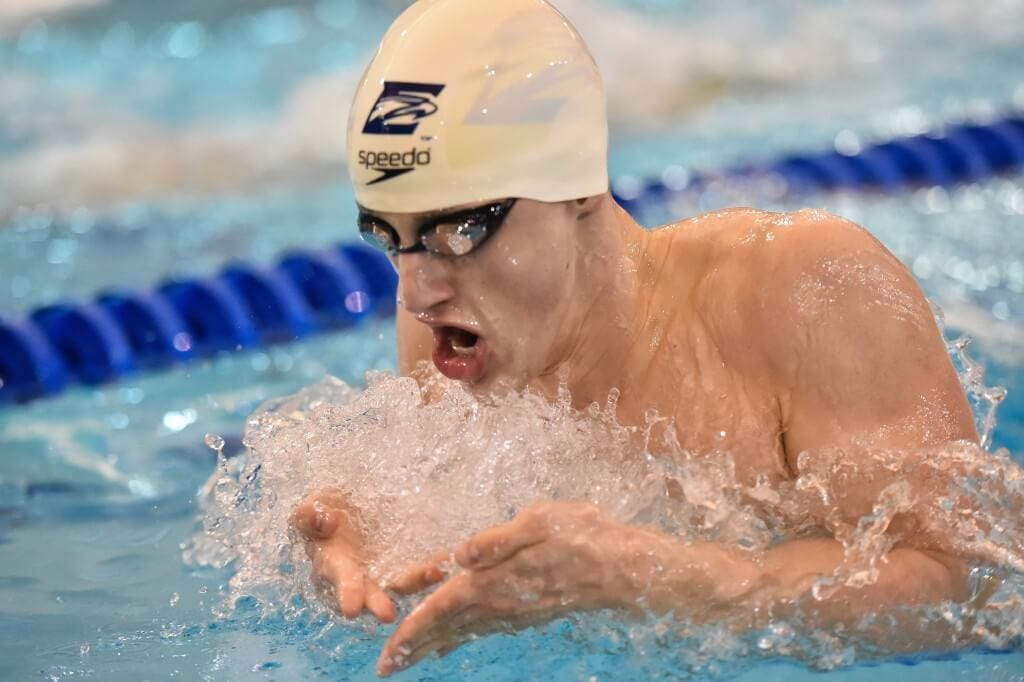
But that 2017 Emory Nationals team was different. Andrew Wilson, soon to be Division III’s first Olympic Gold Medal winner, returned to swim with Emory for one last year.
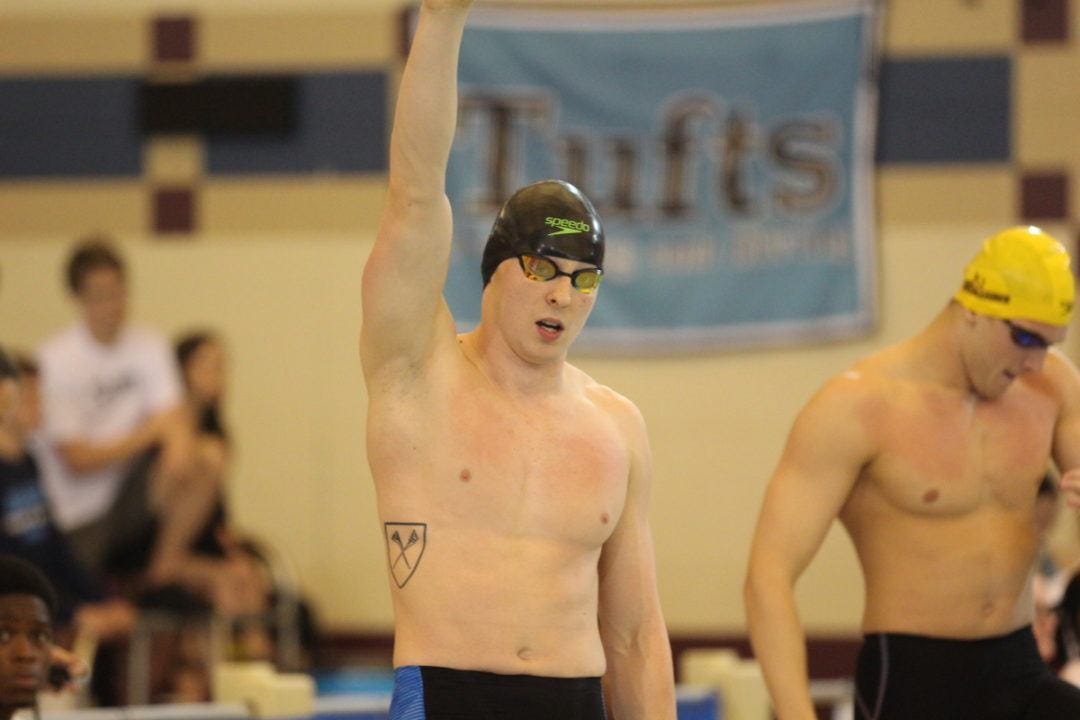
Junior Oliver Smith was the dominant sprint freestyler of this generation and - as a Senior - would establish the current Division III records in 50 and 100 Free.

And then there was Tom Gordon, still a Sophomore, but developing into one of the best distance swimmers in Division III history (he was also a significant threat in 200 Free).
Up and down this roster, there were specialists and generalists swimming at an elite level, able to contribute to record-setting relay teams or grab points in individual events.
Emory set some records.5
And Emory wasted few swims, grabbing points in event after event.
They got completely hosed on the 400 IM, 100 Fly, 1 Meter Diving, and 3 Meter Diving. They had no divers - not a single Emory diver qualified for the Men’s 1 or 3 meter diving at Nationals.
The Emory Eagles won the 2017 Men’s National Championship by 55 points.
438
Their total score was 438 points. It was the lowest winning points total since 1984. And it would not have been enough to win Nationals in 2018 or 2019.
Emory got help
But in 2017, the combination of record setting performances, reasonably consistent finals appearances, and a fairly wide distribution of points among teams (13 teams scored more than 100 points), gave this Dream Team from Emory their first ever Men’s National Championship.
13
In case you are wondering, yes, that Nationals roster of 13 swimmers is the smallest team in the modern era to win a Men’s National Championship.
9/13
And in many ways the team was even smaller than that. Every member of that team made a huge contribution to a legendary win. But only nine members of that team swam in an individual event. Four of the 13 were relay only swimmers, and three of those four swam in only one relay.
This made the team significantly smaller than the Denison team of 2011. That Denison team had (we think) only 9 athletes invited for individual events, but their relay-only invite athletes each had a number of B Cuts allowing them to swim in those events. In at least two cases, this yielded extra points for Denison, as those relay-only invite swimmers outperformed expectations in the individual events.
What does all this mean for Kenyon?
When Nationals arrives, Kenyon will send 10 swimmers and at least one diver to compete for a Men’s National Championship.
Israel Zavaleta
It is worth noting that Israel Zavaleta will be on the team. He has won both the 1 Meter and 3 Meter events at both the 2022 and 2023 Nationals. He holds the all-time Division III record in points for 1 Meter dives. He isn’t just a diver; he’s the best diver.
Big 10
All ten of Kenyon’s swimmers have individual event invites. Djordje Dragojlovic and Noah Hargrove both have three individual event invites. Noel Tumbasz, one of two First-Years on this squad, has only one invite (200 Breast) but also has two B Cuts that will allow him to swim 100 Breast and 200 IM. Senior Max Nonnenmacher has an invite in only 500 Free, but has B Cuts in the mile and 200 Free and can swim those events at Nationals. These are ten swimmers who can cover a lot of events.
Those numerically small teams from Denison and Emory that achieved those remarkable ‘Firsts’ were - upon examination - even smaller than they appeared. They both had a number of swimmers expected to contribute exclusively on relays, and often on only a single relay.
This Kenyon team, with the addition of Mr. Zavaleta, is - upon examination - bigger than it appears. They have measurably more invites per swimmer than any of the other contending teams. They have zero relay-only invites.
Whether Kenyon can translate that into enough points at Nationals is a multi-part question. Can the coaches pull-off a miracle of fatigue management? Will taper magic and random variability place more than the expected number of Kenyon swimmers in the finals? Will enough other teams spread the points around sufficiently to prevent Emory from amassing an unassailable lead?
A lot would have to go Kenyon’s way. Is it really possible for a team with so few names on their Nationals roster to win a Men’s National Championship? Right now, all we can say for sure is: it would be a first.
It started as a simple question: which team in the modern era won a Men’s National Championship with the smallest team?
We are data nerds. We are drawn to Division III swimming for many reasons, but one powerful reason is the comprehensive data sets it provides for our amusement. In any sport, it is unusual to find so much data, with such precise measures, created in near laboratory conditions. Nine times out of ten, swimming data is brilliant. This is one of the other times.
To talk about the anomalous teams we need to talk broadly about more normal cases as well. And here, swimming’s main data sets are doing some unpleasant things. Things that make us concerned that even a good process, sounds programming, and verifiable equations will produce an absolute howler, just because the data sucks.
A quick example. We are using USA Swimming data because we need the names on the relay teams in order to count heads. And even though USA Swimming data is the most authoritative data source, you still get stuff like this:
That’s the record from USA Swimming on Emory’s 200 Medley Relay from Nationals last season. Sloane Donovan is a terrific swimmer, but she competes in Women’s events.
So we beg for your patience. We are double-checking everything, but we are rarely this nervous that something truly incorrect will slip through into the post.
When the invites came out, the list for the Kenyon team competing in the Men’s National Championship was eye-catching. Since 2011, no team has sent more athletes than Kenyon to swim in Men’s events at Nationals. Counting every Nationals from 2011-19 and 2022-3, Kenyon sent an average of 16.1 athletes. That’s one full athlete more than the next closest team (Denison, 15.1). This year, they have ten invited athletes. There are no Kenyon athletes on the alternates list for the Men’s Championship.
Kenyon will almost certainly qualify two divers, and Israel Zavaleta will almost certainly win both Men’s diving events again.
We are also trying to track down this bizarre ‘Owls’ reference and see what, if anything, it has to do with Kenyon swim/dive. We’ll get back to you if we find out anything.
Denison’s single point victory highlights the importance of efforts like Jackson Humphrey’s in the 400 IM. The First-Year swimmer did not have an invite for the event, but he did have a B Cut so was permitted to swim it. He finished in 13th place, worth 4 points. Four points, in a Men’s National Championship won by exactly one point.
And here is a photo of Kenyon Head Coach Jim Steen congratulating the Denison Men after they won the 2011 National Championship. Last year, Denison Magazine published a great oral history of that 2010-11 Men’s team.
It is an obvious point, but as satisfying as it must be to set a record, it doesn’t change the math on a Men’s National Championship. Whether or not it is a record, first place is worth 20 points. You don’t get extra points for setting a new record.
2017 Nationals was, interestingly enough, a crazy meet for records. Including the Emory records, nine records were set…they only swim 18 events total, so half of all events saw new records established in one Nationals. Here are other records set at this meet.
Men 500 Yard Freestyle, 4:18.35 3/15/2017 Arthur Conover, Kenyon
Men 200 Yard Freestyle, 1:36.42 3/16/2017 Evan Holder, Johns Hopkins
Men 200 Yard Butterfly, 1:44.56 3/17/2017 Brandon Lum, Washington University
Men 100 Yard Backstroke, 46.62 3/17/2017 Ben Lin, Williams




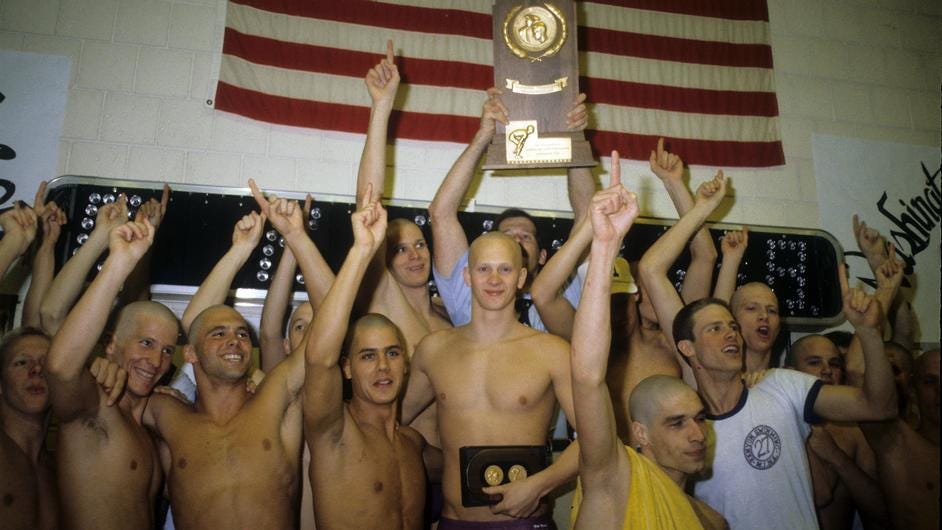

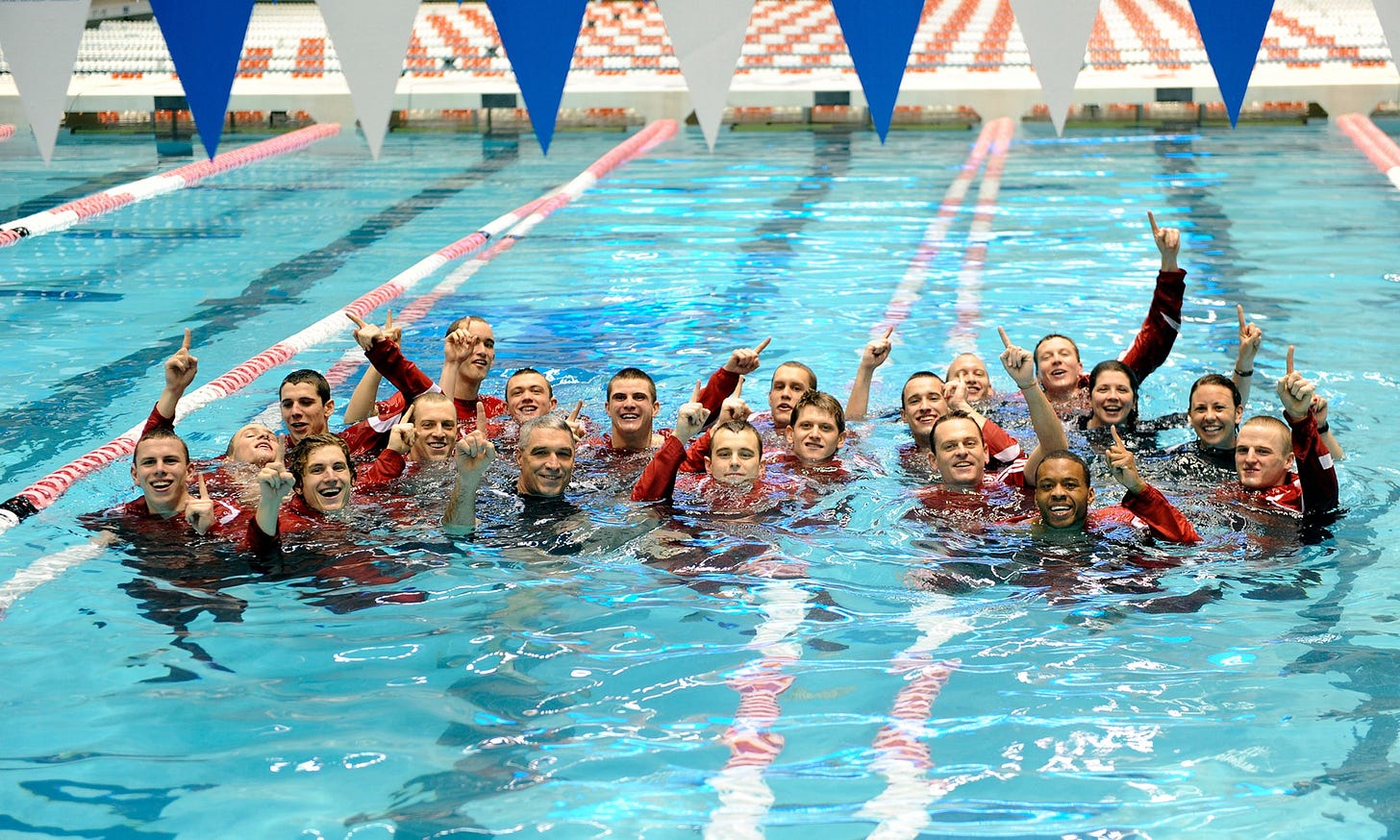


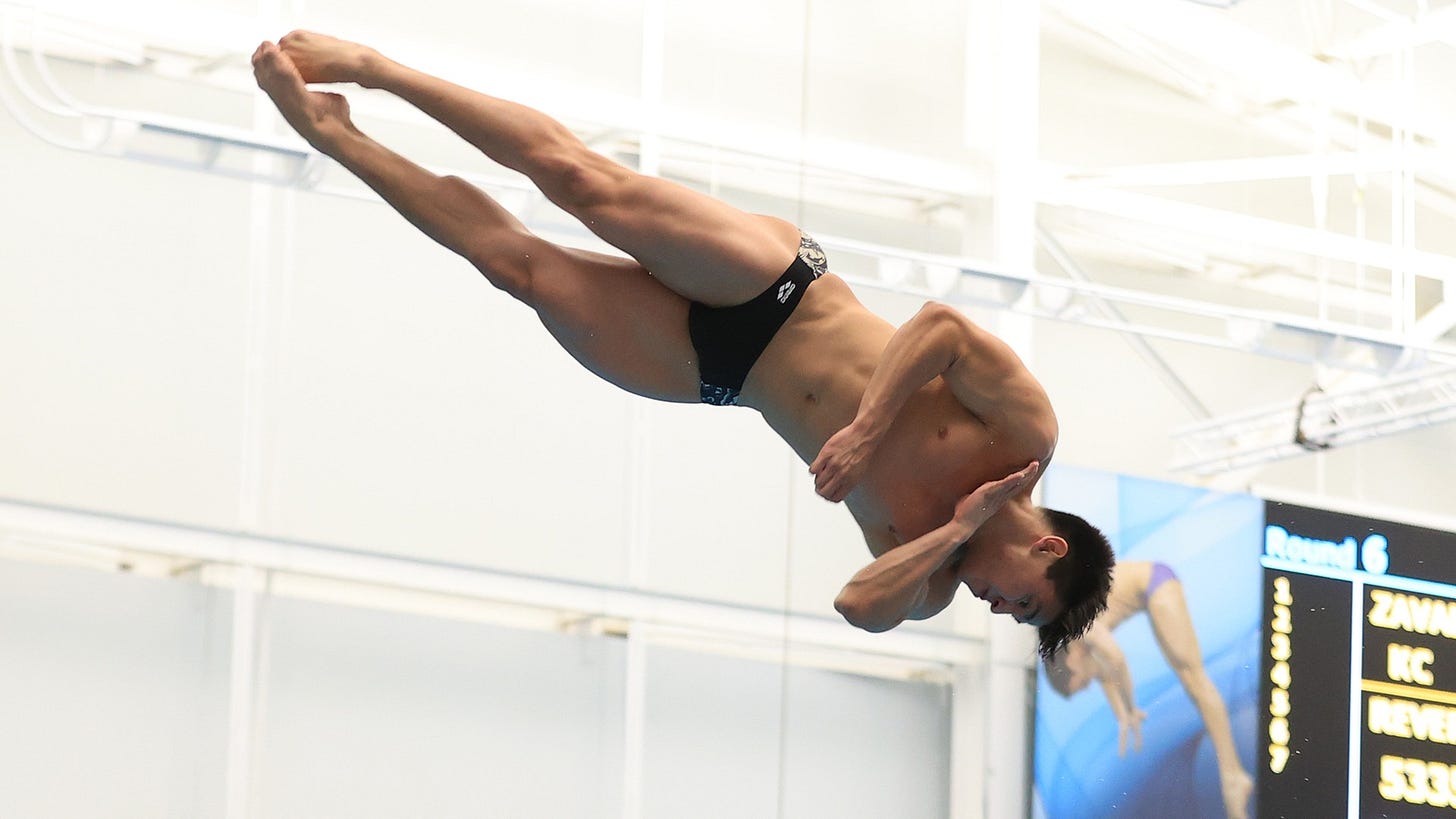


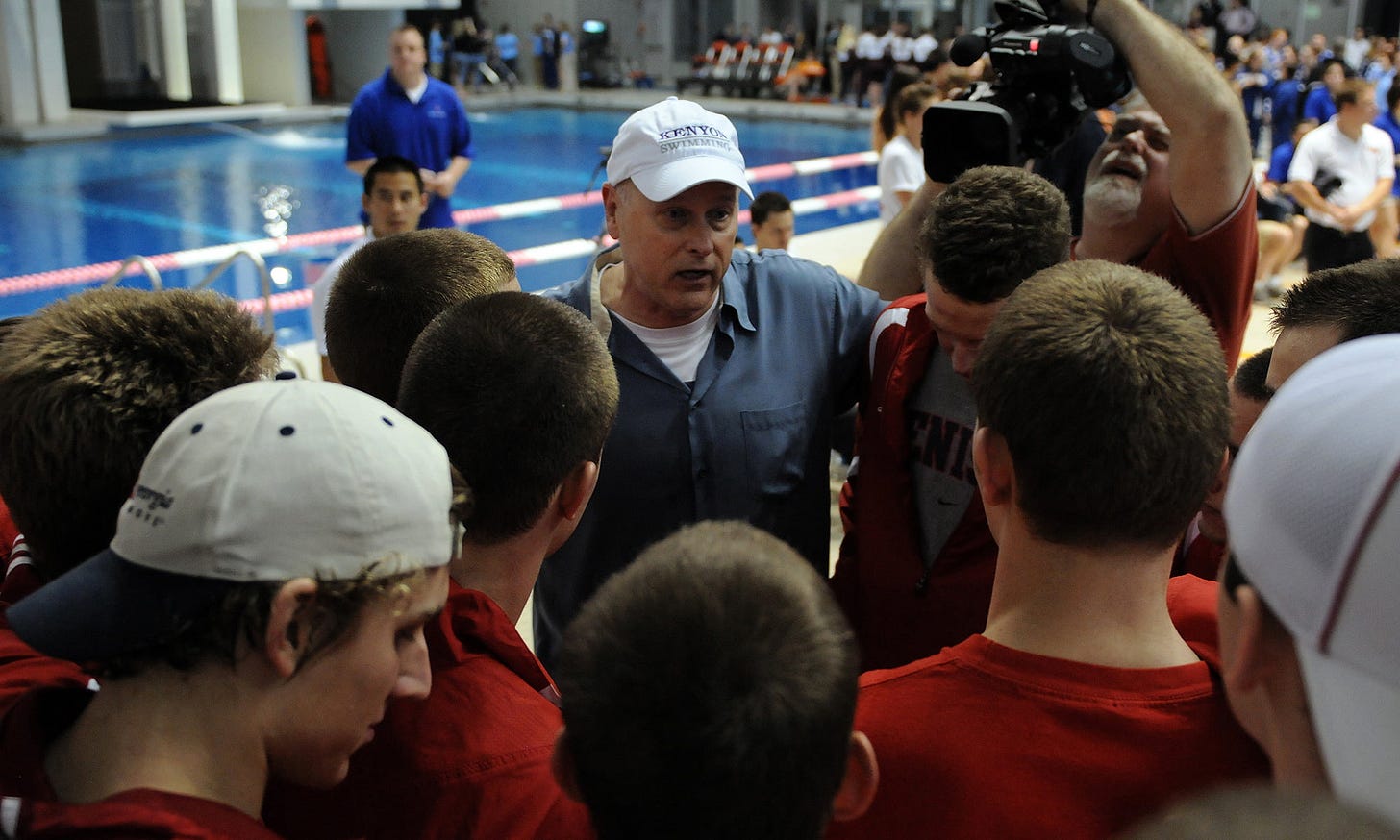
Thanks for catching that.
I will clean it up tonight when I’m done traveling. I gotta say though, I took that right off the hytek for the meet report. I mean, I know you’re right. But this is just more frustration. This one project has exposed serious problems with not just swim cloud, where we know what the problems are, but with the USA, swimming database, and with the actual meet hytek. Smh
Really interesting post. I enjoyed it! One minor correction - Brandon Lum swam for WashU, not Mary Washington.